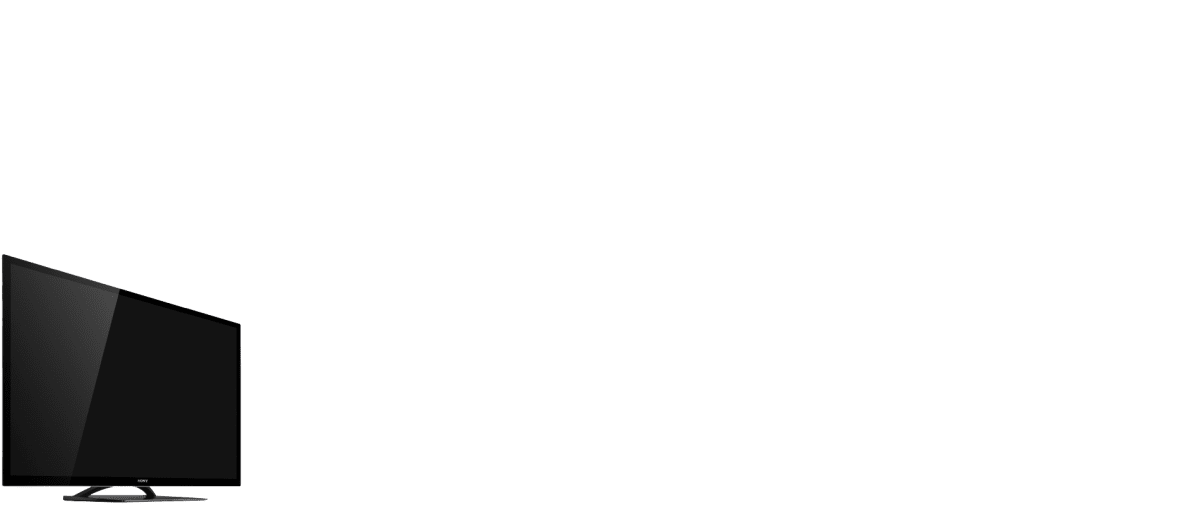Pros
Cons
Introduction
Front
{{section_header}}{{section.name}}{{/section_header}}
The {{product.name}} is quite a looker, something that most of the Sony TVs have in common. This TV features a huge plate of Gorilla Glass that runs from edge-to-edge. Around the perimeter is a thin strip of aluminum finishing. Along the bottom of the front are some indicator lights and the IR sensor.
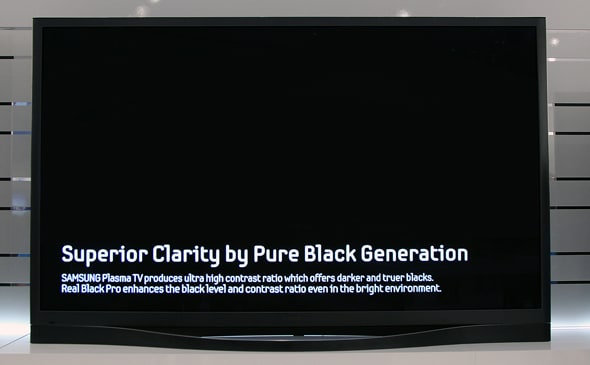
Back
{{section_header}}{{section.name}}{{/section_header}}
The back of the {{product.name}} houses all the ports. Please note that the pictures seen here may not represent the final product design, but we expect they'll be quite similar.
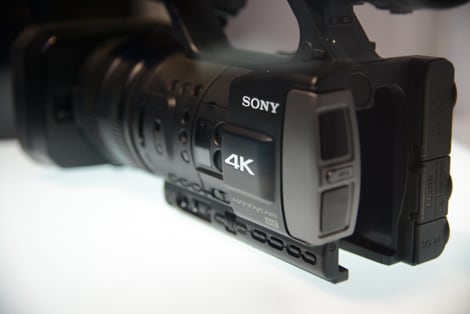
Sides
{{section_header}}{{section.name}}{{/section_header}}
From this angle, you can see that the {{product.name}} is thin, but not nearly as thin as some of the competing TVs we've seen from Samsung. Unusually, none of the press materials mention the thickness of the TV either, which might indicate that Sony has tired of the race to make the thinnest TV. That's fine with us. There's clearly a point of diminishing returns, and anything thinner than the average cell phone is probably slender enough.
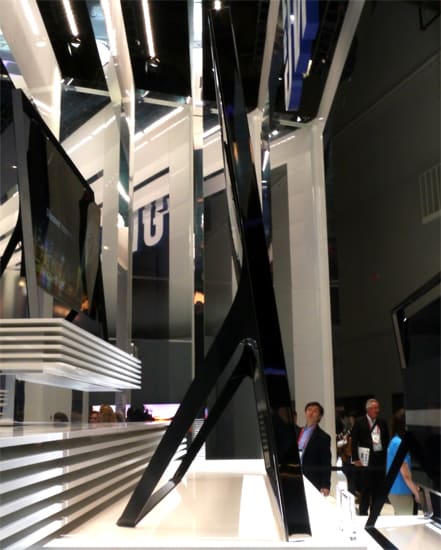
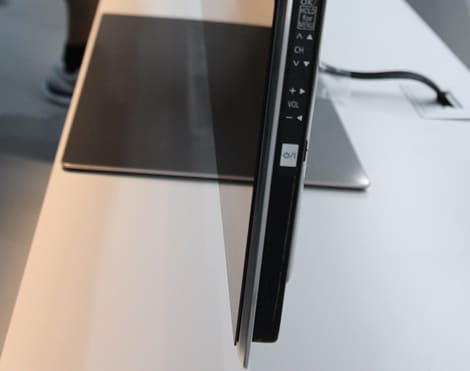
Stand/Mount
{{section_header}}{{section.name}}{{/section_header}}
There seem to be two stands available for the {{product.name}}. The one seen in this photo does not ship with the TV, but is available as a separate purchase. No price was available at this time. It's a very attractiuve stand that matches the look of the TV, and allows the panel to tilt back at a slight angle. The stand that does ship with the TV was not available for photography. but should look similar to last year's TVs.
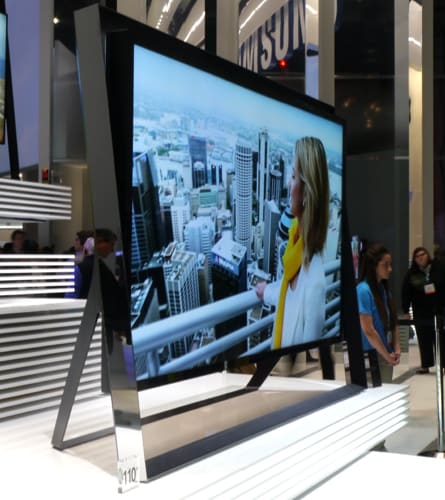
Aesthetics
{{section_header}}{{section.name}}{{/section_header}}
The {{product.name}} has the elegance typical of Sony televisions. Yes, it's a gigantic black rectangle, and there's no getting around that, but Sony has done its best to minimize the bezel, slim the width of the frame, smooth out the hard corners, and either diminish the footprint of the stand or create a much grander and decorative base that matches the look of the frame.
Display Size & Technology
{{section_header}}{{section.name}}{{/section_header}}
All the attention at the Sony booth was placed on the new X-Reality Pro engine, a dual-chip processor that can process incoming signals and compare them to a stored library of patterns. Original signals are improved in color gradation, edge sharpness, MPEG compression improvement, and more. It upscales the signal from 8 bits to 14 bits. No, it can't make a garbage picture look like gold, but it can definitely improve a signal with certain kinds of flaws.
The X-Reality Pro was unveiled last year, but it appears to have gotten some upgrades for 2012, including improvements to its 3D signal processing. More on that in the next page of the review.

In terms of physical components that aid display, the {{product.name}} has a Corning Gorilla Glass panel that runs from edge-to-edge. Layered into the glass is OptiContrast, which reduces ambient glare.
Formats & Resolution
{{section_header}}{{section.name}}{{/section_header}}
The {{product.name}} has a 1080p resolution.
Color
Motion & Refresh Rate
{{section_header}}{{section.name}}{{/section_header}}
The {{product.name}} has a 960Hz refresh rate, similar to last year's HX929 series (read full review). It's our general opinion that we're well past the point of sensible refresh rate speed boosts. The original signal of any video source is always 60 Hz. Anything faster than that is either simply displaying the original frames more than once, or creating interpolated frames that "guess" what the frame should look like between two original frames. Sony brands this as MotionFlow, but all the TV manufacturers have a version of it. The effect ranges from decent to disturbing, depending on the source content. Read more about the process in our special article, "Cleaning up the Soap Opera Effect
3D Glasses
{{section_header}}{{section.name}}{{/section_header}}
Sony is firmly behind active shutter technology when it come to 3D display, along with Samsung and Panasonic. In fact, the three companies have finally gotten together to create a standard for the glasses. This would allow third party manufacturers to make glasses, in turn finally driving the price down to families could afford enough to outfit everyone for a 3D movie.
Unfortunately, the {{product.name}} is not among those that will share the new glasses standard. They'll ship with Sony proprietary glasses.
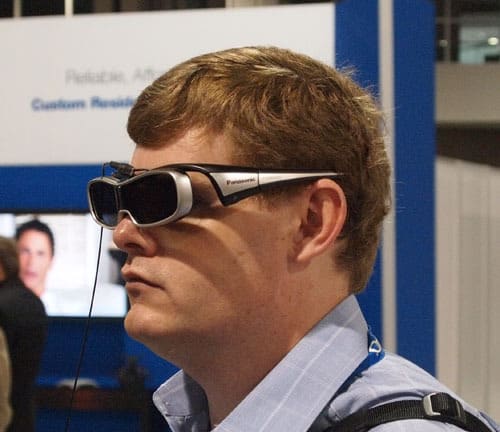
There's no getting around the fact that 3D glasses make you look ridiculous (and possibly feel ridiculous too).
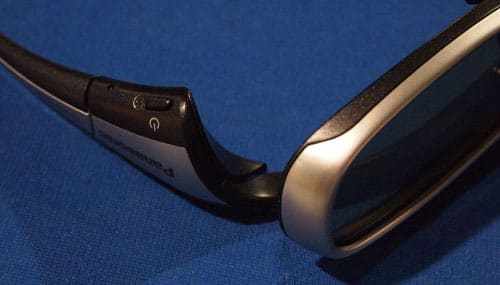
The power button makes the glasses usable for viewing 3D by turning on the active shutter feature.
3D Effect
{{section_header}}{{section.name}}{{/section_header}}
The X-Reality Pro engine has been greatly enhanced to fix some of the issues still plaguing 3D, namely crosstalk and depth. Even on the best 3D TVs we've reviewed, there's also some ghosting around images that diminishes the 3D effect. The new Sony TVs that include the X-Reality Pro engine are removing ghosting. They're also doing frame analysis to determine depth, then make color and brightness adjustments to the picture at the pixel level to improve the overall 3D effect.
Relying solely on the demo TVs that Sony provided is a fool's errand. The typically had two TVs side-by-side, "feature x on" versus "feature x off." However, the "before" images seemed to display an impossible amount of crosstalk, certainly more than we've seen on a TV in our labs. We'll have to wait until we get the TV in-house to do our own analysis.
Audio & Video Ports
{{section_header}}{{section.name}}{{/section_header}}
The {{product.name}} pictured here is not guaranteed to be the final design, so we won't take the ports here as gospel truth. That said, we're seeing four HDMIs, one component, one composite, cable/antenna, VGA, an 1/8th inch audio in, digital audio out, headphone out, LAN, and a special port for the speaker integrated stand (sold separately). There's also built-in WiFi b/g/n.
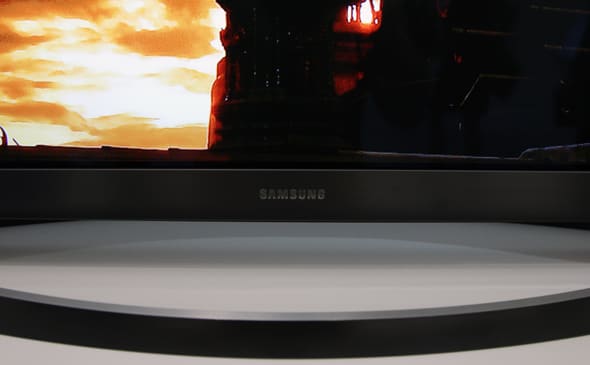
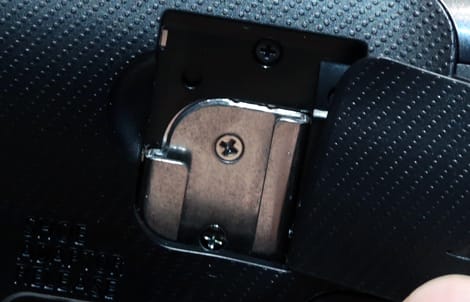
Internet & Other Media
{{section_header}}{{section.name}}{{/section_header}}
There's a war on for the smartest "smart TV," and Sony is losing. Two years ago they were on top, offering far more content partners and services than anyone. Then in 2011 Samsung and LG stepped it up, not by offering more content, but my making the content easier to access. They streamlined and simplified their menus, while Sony's got more and more cluttered. We'd hoped that Sony could pull it all together this year into a more cohesive package. The indications so far are that they have not.
As it was explained to use, all streaming content is now under the banner of Sony Entertainment Network (SEN). Qriocity, the Sony-branded streaming content provider meant to compete with Netflix, has already been dissolved and replaced by Video Unlimited and Music Unlimited. The former is an online rental service, while the latter is split into two separate subscription services, one or both of which may use the cloud. You with us so far? Didn't think so.
The only even mildly interesting innovation we saw were integrated Facebook and Twitter. You can Like and tweet the shows you're watching, the names of which will automatically populate based on the shows metadata. Unfortunately, it only works if you're watching content from one of Sony's streaming partners – not live cable or local media like Blu-Rays.
Remote
{{section_header}}{{section.name}}{{/section_header}}
The {{product.name}} will ship with a standard remote control, probably not too dissimilar from the ones we saw last year. However, they're now extending control of the TV over to tablets and smartphones. There will be apps for Android and iOS, and an app will be preloaded on Sony tablets. They interact with the TV over WiFi.

Controls
{{section_header}}{{section.name}}{{/section_header}}
The controls located around back on the right side of the TV panel.
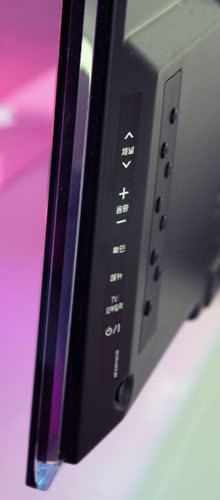
Menu
{{section_header}}{{section.name}}{{/section_header}}
We spent much of last year eviscerating the menus on Sony TVs. Their overly complex and labyrinthine menu structure virtually insured that you'd never bother with most their streaming content services or calibration processes. Very little has changed in 2012. We hated it then, and we don't like it now.
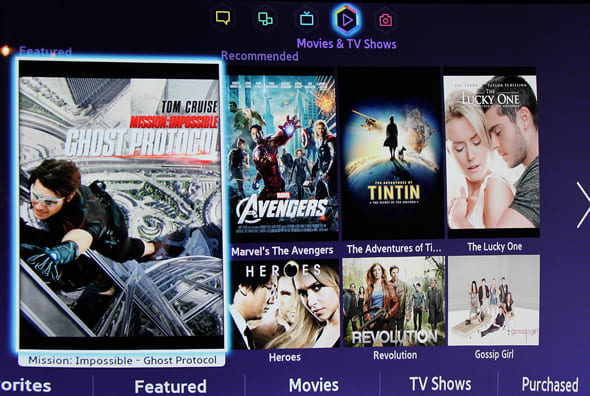
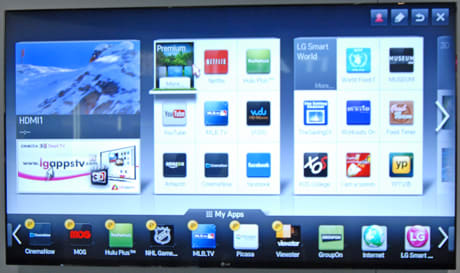
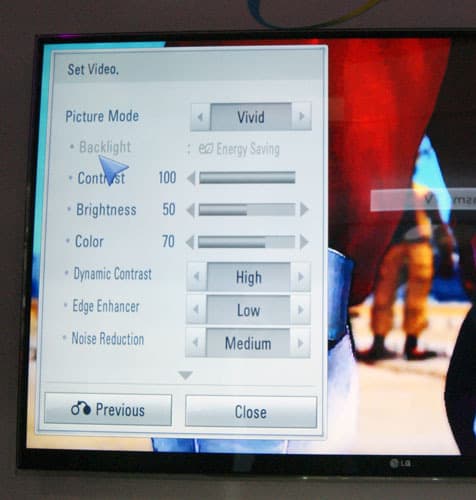
Conclusion
{{product.vanity}}
The {{product.name}}, as the flagship TV for 2012, represents all the Sony has been developing in the last year. So It's fascinating, therefore, to see how they want to launch their 2012 strategy here at CES, the industry's annual call to arms. Judging by our conversations with Sony, their energies have gone into refining image quality, first and foremost. Sony has always made some of the top-performing TVs in the world, so it's not a surprise that they want to reinforce that reputation, especially as Samsung is so clearly dominating, both in dollar share and design innovation.
And that's Sony's real challenge. Consumers shop in a comparative framework – this TV versus that TV, side-by-side. In those environments, it's very hard to convince people that esoteric benefits like dual-core processing and 960 Hz refresh are somehow better than those sweet, slick looking Samsungs with their color menus and shiny aluminum frames. Whether those technological improvements really do make for a better TV is debatable. "Good enough" really is good enough for most people, and the advances that Sony has made in the {{product.name}} are only going to be noticed by people that are knowledgeable and passionate about image quality. Maybe that's exactly the crowd that pays $3000+ for a TV, in which case Sony will be just fine. But expensive processing has be limited to only the highest-end TVs for cost-control reasons, while good user interface costs nothing to integrate through an entire line-up, right down to the cheapest TV.
Overall, we're excited to get the {{product.name}} in our labs because, as we said, they make some of the best-performing TVs. We only wish that they'd taken the time to re-evaluate the user experience and realize that plenty of consumers shop by look and feel, and not just what's under the hood.
Series Comparision
{{product.manufacturer_specs['Series Name']}} Series
The Sony HX850 series will come in two sizes, 46 and 55 inches.
Specs
{{manufacturer_specs_table}}
Meet the tester
David Kender oversees content at Reviewed as the Editor in Chief. He served as managing editor and editor in chief of Reviewed's ancestor, CamcorderInfo.com, helping to grow the company from a tiny staff to one of the most influential online review resources. In his time at Reviewed, David has helped to launch over 100 product categories and written too many articles to count.
Checking our work.
Our team is here to help you buy the best stuff and love what you own. Our writers, editors, and experts obsess over the products we cover to make sure you're confident and satisfied. Have a different opinion about something we recommend? Email us and we'll compare notes.
Shoot us an email